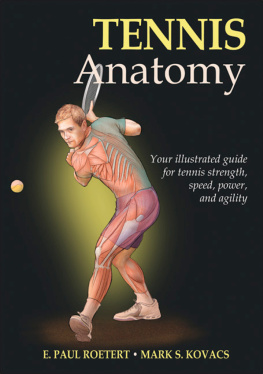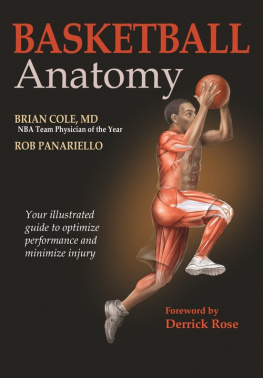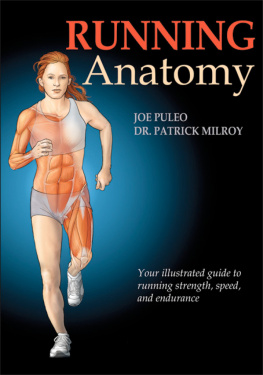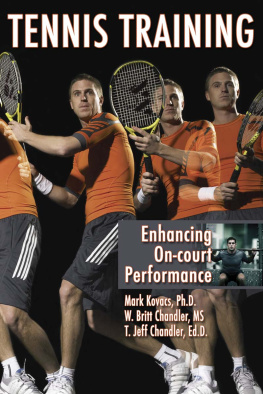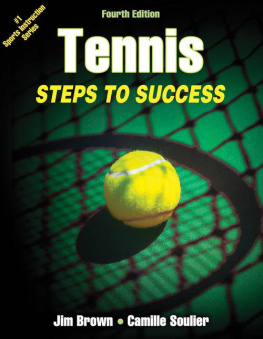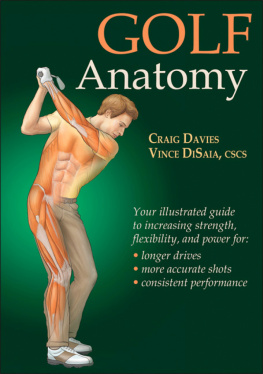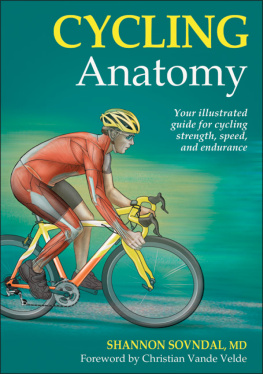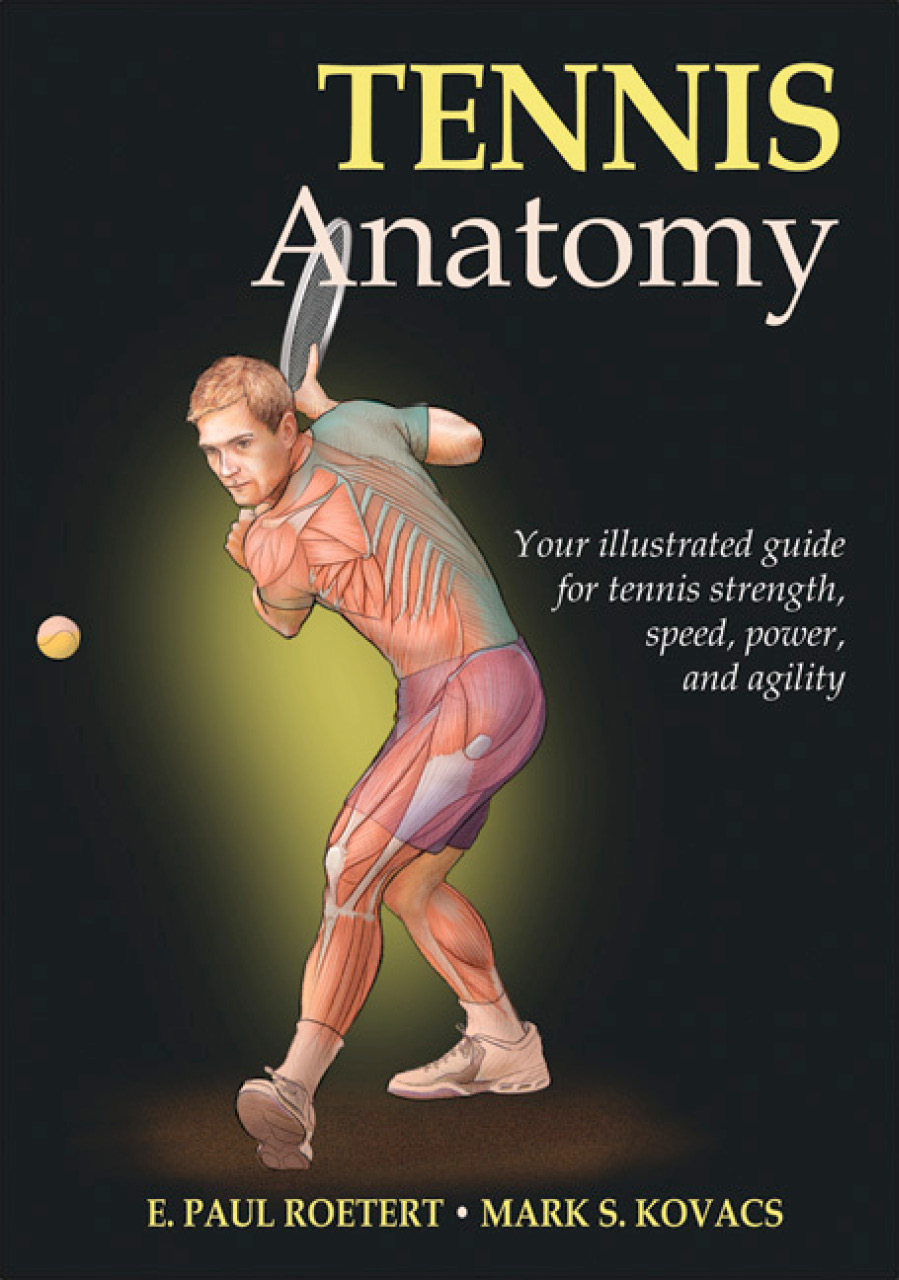TENNIS ANATOMY
E. Paul Roetert
Mark S. Kovacs
Human Kinetics
Library of Congress Cataloging-in-Publication Data
Roetert, Paul
Tennis anatomy / E. Paul Roetert, Mark S. Kovacs.
p. cm.
ISBN-13: 978-0-7360-8936-4 (soft cover)
ISBN-10: 0-7360-8936-5 (soft cover)
1. Tennis--Training. I. Kovacs, Mark. II. Title.
GV1002.9.T7R64 2011
796.342--dc22
2011006519
ISBN-10: 0-7360-8936-5 (print)
ISBN-13: 978-0-7360-8936-4 (print)
Copyright 2011 by United States Tennis Association
All rights reserved. Except for use in a review, the reproduction or utilization of this work in any form or by any electronic, mechanical, or other means, now known or hereafter invented, including xerography, photocopying, and recording, and in any information storage and retrieval system, is forbidden without the written permission of the publisher.
This publication is written and published to provide accurate and authoritative information relevant to the subject matter presented. It is published and sold with the understanding that the author and publisher are not engaged in rendering legal, medical, or other professional services by reason of their authorship or publication of this work. If medical or other expert assistance is required, the services of a competent professional person should be sought.
Acquisitions Editor: Laurel Plotzke-Garcia; Developmental Editor: Cynthia McEntire; Assistant Editors: Laura Podeschi, Claire Gilbert; Copyeditor: Patricia MacDonald; Graphic Designer: Fred Starbird; Graphic Artist: Kim McFarland; Cover Designer: Keith Blomberg; Photographer (for illustration references): Neil Bernstein; Visual Production Assistant: Joyce Brumfield; Art Manager: Kelly Hendren; Illustrator (cover and interior): Jennifer Gibas; Printer: United Graphics
Human Kinetics books are available at special discounts for bulk purchase. Special editions or book excerpts can also be created to specification. For details, contact the Special Sales Manager at Human Kinetics.
Printed in the United States of America 10 9 8 7 6 5 4 3 2 1
The paper in this book is certified under a sustainable forestry program.
Human Kinetics
Web site: www.HumanKinetics.com
United States: Human Kinetics
P.O. Box 5076
Champaign, IL 61825-5076
800-747-4457
e-mail: humank@hkusa.com
Canada: Human Kinetics
475 Devonshire Road Unit 100
Windsor, ON N8Y 2L5
800-465-7301 (in Canada only)
e-mail: info@hkcanada.com
Europe: Human Kinetics
107 Bradford Road
Stanningley
Leeds LS28 6AT, United Kingdom
+44 (0) 113 255 5665
e-mail: hk@hkeurope.com
Australia: Human Kinetics
57A Price Avenue
Lower Mitcham, South Australia 5062
08 8372 0999
e-mail: info@hkaustralia.com
New Zealand: Human Kinetics
P.O. Box 80
Torrens Park, South Australia 5062 0800 222 062
e-mail: info@hknewzealand.com E4826
Converted to eBook by EasyEPUB
Preface
T his book is written for serious competitive and recreational tennis players. Many tennis books emphasize fitness or strength and conditioning. Tennis Anatomy takes the next step and focuses on why and how you should get fit to play tennis. In this book, we highlight the different muscle groups involved in each of the strokes and show you how to best train those specific muscle groups as part of a comprehensive approach to tennis-specific training.
With the support of the United States Tennis Association (USTA), we provide the most up-to-date, relevant information on tennis conditioning available. As the national governing body of tennis in the United States, the USTA has a responsibility to grow and develop the sport. Through its player development program, the USTA shares the latest training techniques with competitive players in the United States. That mission encouraged us to take on this project and provide you with these training methods based on the anatomy of tennis.
Tennis was once considered a sport that could be played by people from age 8 to 80, but that range has expanded because of new training methods. The USTA offers 10 and Under Tennis for players age 10 and younger, who learn the sport while using modified equipment. In addition, national-level tournaments are offered for players age 90 and over. This shows the tremendous health, fitness, coordination, and psychological benefits that can be derived from the sport. Clearly, being a well-conditioned tennis player can assist in a long tennis career.
Of course the number of years someone can play is only one aspect of enjoying the game. The quality of play also is greatly enhanced by good training and conditioning. That is the true focus of this book. Whether you are getting in shape for league play, trying out for a high school or college team, or wanting to perform at a higher level in tournaments, this book provides you with up-to-date, practical training information based on the latest research available.
The first chapter provides an in-depth overview of the demands of the sport, the relationship of court surfaces and playing styles, the anatomy of each of the tennis strokes, and the physiological considerations of designing a training program. Chapters 2 through 7 systematically explain the role of each major body part in tennis play, focusing on muscle anatomy and its relationship to the strokes and providing specific exercises. Each exercise includes a tennis focus section that highlights how the exercise directly translates to improved on-court stroke performance or movement. Chapters 8 through 10 follow a similar format but highlight the importance of body rotation, movement skills, and injury prevention, respectively. The anatomical illustrations that accompany the exercises are color coded to indicate the primary and secondary muscles featured in each exercise and movement.

You will enjoy and benefit from this information. Challenge yourself to learn more about the anatomy of your body as well as the tennis strokes, and improve your game by adding tennis-specific conditioning methods to your training. By incorporating these training techniques, you will surely be able to take your game to the next level.
Acknowledgments
T his book would not have been possible without the dedication, coaching, and support we have received over the years from the many sport science and medicine experts that have crossed our paths. All of our thoughts and ideas have been shaped by these dedicated people through courses, individual meetings, publications, and conferences. We cannot begin to name all of them, but we are truly indebted to them.
Another group of people instrumental in our lives is the many coaches and tennis teaching professionals who have taught us and helped us in the areas of player training as well as coaching education.
Human Kinetics came up with the idea and pursued our interest, and the United States Tennis Association (USTA) allowed us to take on this project. We very much appreciate the opportunity both organizations provided us. The Boca West Country Club made their tennis courts and fitness facilities available to us, for which we are very grateful.

